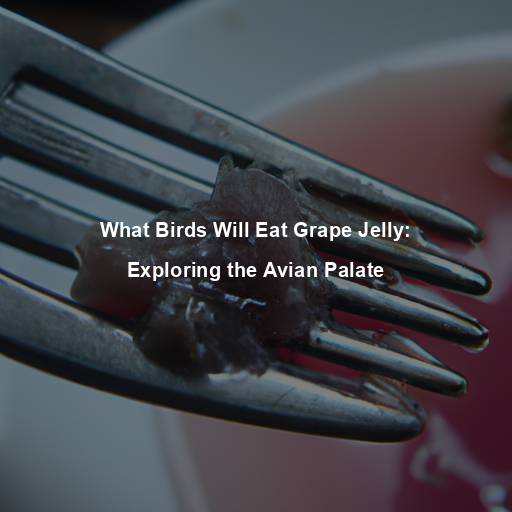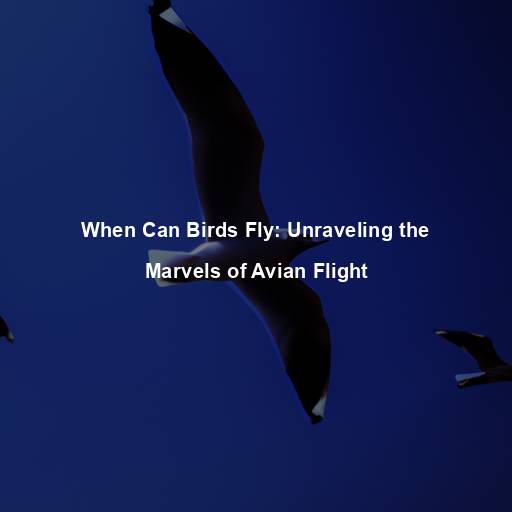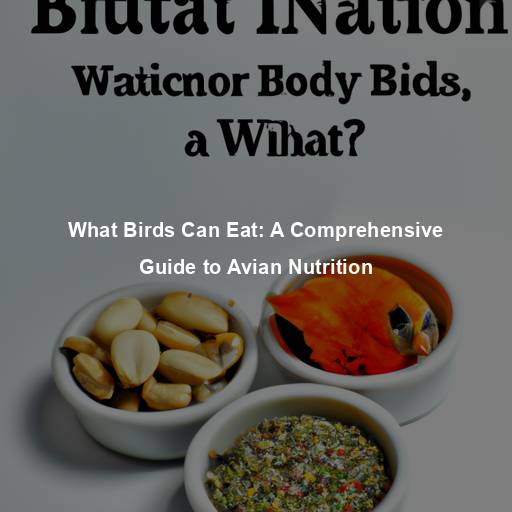What Birds Will Eat Grape Jelly: Exploring the Avian Palate
Last Updated on July 18, 2023 by Evan
Contents [hide]
- 1 The Oriole Connection
- 2 The Thrill of Attracting Hummingbirds
- 3 The Versatile Bluebirds
- 4 The Unexpected Guests: Woodpeckers and Warblers
- 5 Other Potential Grape Jelly Enthusiasts
- 6 Creating an Attractive Grape Jelly Feeding Station
- 7 Observing Bird Behavior at Grape Jelly Feeders
- 8 Alternative Food Sources for Birds
- 9 Responsible Bird Feeding Practices
- 10 FAQs: What Birds Will Eat Grape Jelly
The Appeal of Grape Jelly to Birds
Grape jelly has become a popular choice among bird enthusiasts as an alternative food source. While it may seem unconventional, many birds are attracted to the sweet and sticky nature of grape jelly. The high sugar content offers a quick energy boost, which is especially beneficial during migration or harsh weather conditions when natural food sources may be scarce.
The Oriole Connection
The Vibrant Orioles
In the colorful realm of avian admirers, there exists a prominent species with an insatiable fondness for grape jelly – the oriole. Adorned in a dazzling wardrobe of oranges, blacks, and yellows, these magnificent creatures captivate our imaginations. As neotropical migrants, they grace North America with their presence during the summertime, only to embark on a mysterious journey southwards as winter unfolds its wintry embrace.
Why Orioles Love Grape Jelly
There’s a fascinating secret that many bird enthusiasts have uncovered: Orioles have developed a rather unexpected fondness for the delightful taste of grape jelly. It’s a peculiar yet delightful discovery that has taken the bird-watching community by storm. With the rich and irresistible flavor of grape jelly mirroring the heavenly nectar found in the flowers these vibrant creatures typically feast upon, it’s no wonder that bird lovers have begun offering this unexpected treat. By simply placing grape jelly in specialized oriole feeders, one can invite the enchanting presence of these magnificent birds right into their very own backyard.
The Thrill of Attracting Hummingbirds
The Delicate Hummingbirds
Have you ever wondered which bird species can’t resist the sweet allure of grape jelly? Well, look no further than the fascinating hummingbird! These little marvels of nature, with their lightning-fast wing beats and the uncanny ability to effortlessly hover in mid-air, never cease to amaze. Their iridescent plumage and mesmerizing flight patterns have become a source of endless fascination for bird enthusiasts around the globe.
Grape Jelly as a Hummingbird Attractor
While hummingbirds primarily feed on flower nectar, they are also opportunistic feeders and will explore alternative food sources. Grape jelly, with its sweet taste and high sugar content, can be an irresistible treat for these tiny birds. By offering grape jelly in small amounts alongside nectar feeders, you may have the chance to witness the delightful sight of hummingbirds enjoying this unexpected delicacy.
The Versatile Bluebirds
The Beloved Bluebirds
There’s something mysteriously charming about bluebirds; their exquisitely vibrant blue plumage, combined with their enchanting melodies, brings an unexplainable sense of elation and delight. Spread across the vast landscapes of North America, these delightful creatures have managed to capture the hearts of many with their breathtaking beauty and melodious voices that mesmerize both onlookers and avid bird enthusiasts. Their penchant for nesting in cavities adds an aura of intrigue and curiosity to their already captivating presence, leaving us in awe of their divine existence.
Grape Jelly to Attract Bluebirds
Bluebirds, who typically sustain themselves on a diet of insects and berries, surprisingly exhibit a fondness for grape jelly every now and then. Introducing grape jelly as a supplementary provision can prove to be a delightful reprieve for these avian creatures, especially when their preferred sustenance faces scarcity in the chilly months. In a perplexing twist, these vibrant birds exhibit a burst of interest in the sweet and sticky treat, adding a touch of enigma to their usual culinary preferences.
The Unexpected Guests: Woodpeckers and Warblers
The Woodpecker Fascination
Woodpeckers are fascinating birds known for their ability to drum on tree trunks with their strong beaks. These birds play a crucial role in ecosystems by excavating cavities that serve as homes for other wildlife.
Grape Jelly as a Woodpecker Lure
Woodpeckers, those fascinating avian creatures known for their insatiable appetite for insects and tree sap, have recently exhibited an unexpected intrigue for the mouthwatering delight of grape jelly. Who would have thought that these agile peckers would venture into the realm of sweet, sticky goodness? Perhaps it’s the tantalizing nature of the jelly’s texture and sweetness that draws them in, causing a delightful perplexity among bird enthusiasts everywhere.
The Warbler Surprise
Warblers, those lovely and melodic avian creatures, are a fascinating bunch. Usually, they feast on insects, blending their chirps with nature’s buzz. Yet, during their migratory journeys, these feathered wanderers have been caught exploring uncharted culinary territories—yes, you heard it right—grape jelly! Who would have guessed that these tiny beings would swap their insectivorous ways for sweet and sticky indulgence?
Other Potential Grape Jelly Enthusiasts
The Mockingbird Mystery
The Northern Mockingbirds, renowned for their awe-inspiring vocal prowess, have an intriguing palette. While their main diet consists of insects, they occasionally venture into the realm of fruity delicacies, such as grape jelly. Their propensity for culinary exploration adds an element of intrigue to their avian persona, making them perpetually open to new gastronomic adventures.
The Surprising Sparrows
House Sparrows, although considered common birds, can also be attracted to grape jelly. These adaptable birds have a diverse diet that includes seeds, insects, and even human food scraps. Offering grape jelly can be an interesting way to observe their feeding behaviors up close.
Balancing Nutritional Needs
Birds may find grape jelly enticing, but it’s crucial to understand that it cannot substitute their natural dietary needs. To thrive, birds rely on a well-balanced diet that includes proteins, fats, vitamins, and minerals. Offering grape jelly in small quantities can be a stimulating supplement, but it should never become their sole source of sustenance.
Potential Pitfalls of Excessive Sugar Consumption
Feeding birds excessive amounts of grape jelly can have negative consequences on their health. Birds that consume too much sugar may become overweight or develop imbalances in their nutritional intake. Furthermore, a diet high in sugar can lead to dental issues and disrupt their natural foraging behaviors.
Offering a Well-Rounded Diet
To ensure the well-being of the birds that visit your backyard, it is crucial to provide a balanced and varied diet. This can include a combination of natural food sources, such as nectar, insects, seeds, fruits, and berries, along with occasional treats like grape jelly. By offering a diverse array of foods, you can attract a wider range of bird species and support their overall health and well-being.
Creating an Attractive Grape Jelly Feeding Station
Selecting the Right Feeder
When it comes to feeding birds grape jelly, choosing the right feeder is essential. Several feeder options are available, specifically designed to hold jelly or fruit. Look for feeders with small openings that prevent the birds from becoming stuck or injured.
Placement and Accessibility
To attract birds to your grape jelly feeding station, consider its placement and accessibility. Hang feeders in a quiet and secure location, away from potential predators. Make sure the feeder is visible and easily accessible for birds to find and enjoy their sweet treat.
Maintaining Cleanliness
Maintaining impeccable hygiene for bird feeders is an absolute necessity in combatting the bewildering complexities of disease transmission among our avian companions. As the intensity of heat amplifies during the sweltering days, the perilous perils of grape jelly turning awry ascend exponentially. Thus, it becomes imperatively vital to embark upon a ritualistic practice of diligently cleansing and replenishing feeders, in order to bestow upon our plumed guests a resplendent and secure replenishment of sustenance.
Observing Bird Behavior at Grape Jelly Feeders
The Joy of Bird-Watching
Indulging our winged companions with a dollop of grape jelly presents an enchanting spectacle, unravelling the enigmatic tapestry of their behaviors in the most intimate manner imaginable. In this captivating act, avid bird enthusiasts are bestowed with an unprecedented chance to marvel at the bountiful display of fervor and camaraderie, as a harmonious ballet of varying species plunders the feeder, each one unfolding their distinct feeding patterns and intricate social hierarchies.
Recording Observations
There’s something truly magical about the act of journaling or capturing those fleeting moments when a vibrant array of bird species gather around the grape jelly feeder. With each entry, carefully noting down the date, time, weather conditions, and any captivating behaviors or interactions, you embark on a perplexing journey that unravels the intricate mysteries of these winged creatures. As the pages fill up, you’ll soon find yourself immersed in a burst of bewilderment and awe, as patterns start to reveal themselves, and a deeper understanding of the unique preferences of each bird species begins to take shape.
Alternative Food Sources for Birds
The Importance of Native Plants
One delicious way to attract birds to your garden is by serving up some grape jelly. But did you know that creating a bird-friendly habitat goes beyond just a sweet treat? Cultivating native plants not only adds a burst of beauty to your surroundings but also provides a perplexing array of natural food sources like nectar, fruits, and seeds that are tailor-made for our feathered friends’ dietary needs. So, by planting natives, you’re not only pleasing the eye but also offering a buffet that’s sure to leave our avian companions singing with delight.
Nectar-Producing Flowers
If you’re looking to add a touch of vibrancy to your garden, why not consider planting an array of nectar-producing flowers? The delightful presence of hummingbirds and orioles can be effortlessly lured in by the irresistible allure of bee balm, cardinal flower, and trumpet vine. These colorful blossoms serve as a delectable source of nourishing nectar that these feathered creatures simply cannot resist. So why not embrace the beauty of nature and create a haven filled with enchantment and fascination?
Berry-Bearing Shrubs and Trees
Discover the enigmatic allure of berry-bearing shrubs and trees. Delight in a captivating abundance of fruits that beckon birds with an irresistible temptation. These magnificent plants effortlessly weave a tapestry of sustenance, protection, and refuge, weaving a vibrant ecosystem that harmoniously houses countless avian treasures.
Insect-Friendly Gardens
Creating an insect-friendly garden by incorporating native plants that attract insects can be highly beneficial for birds. Insects are a vital source of protein for many bird species, especially during the breeding season when they need to feed their young.
Responsible Bird Feeding Practices
Understanding the Impact
Feeding our feathered friends can bring unparalleled joy, but let us tread this path carefully. The key lies in striking a delicate balance – our offerings should simply enhance their existing culinary choices, rather than ruffling their foraging feathers. Overindulgence in man-made morsels might inadvertently steer them away from their natural feeding habits, causing an unsettling reliance on our handouts, which could ultimately prove detrimental to their thriving communities.
Consistency and Regularity
When it comes to nourishing our avian friends with treats like grape jelly, it’s crucial to establish a consistent routine that they can rely on. Birds quickly develop a dependency on these supplementary food sources, making abrupt alterations or sudden discontinuations perplexing and potentially troublesome for them. Should you decide to halt the feeding, I recommend a gradual transition that allows our feathered companions to adjust and explore alternative sustenance options.
Education and Awareness
Discovering the intricate world of responsible bird feeding is an absolute necessity in order to foster a harmonious environment for our feathered friends. An essential step towards this noble goal is delving deep into the fascinating realm of avian dietary preferences and innate behaviors. Armed with this valuable knowledge, you will be empowered to make well-informed choices concerning the delectable morsels you set before these delightful creatures, while also mastering the art of feeding them in a manner that resonates with their natural instincts.
FAQs: What Birds Will Eat Grape Jelly
What types of birds will eat grape jelly?
Many different bird species are known to have a fondness for grape jelly. Some common examples include orioles, catbirds, tanagers, mockingbirds, and certain types of woodpeckers. However, it is important to note that not all bird species are attracted to grape jelly, so the interest may vary among regions and individual preferences.
Can I offer grape jelly to hummingbirds?
While hummingbirds primarily feed on nectar from flowers, some people do offer grape jelly as an occasional treat. It is important to use grape jelly sparingly and ensure it is not the sole source of nutrition for hummingbirds. If offering grape jelly to hummingbirds, it is recommended to mix it with water at a 1:3 ratio (one part grape jelly and three parts water) to dilute it and reduce the sugar concentration. It should be provided in small amounts and not on a daily basis.
How can I attract orioles with grape jelly?
Orioles are particularly fond of grape jelly and can be attracted to your backyard by offering it in specifically designed oriole feeders. Fill the feeder with grape jelly and place it in a visible and accessible location. Additionally, having fresh oranges or orange halves nearby can further attract orioles, as they are attracted to the color orange. Keep in mind that grape jelly should be changed regularly (every 1-2 days) to prevent spoiling and maintain its appeal to the birds.
Are there any potential risks to feeding birds grape jelly?
Feeding birds grape jelly can be a delightful way to observe and attract certain species. However, it is important to be mindful of a few potential risks. Grape jelly is high in sugar, so it should be offered in moderation to prevent excessive sugar intake by birds. Additionally, because grape jelly is not a natural food source for birds, it should not replace their regular diet of insects, fruits, seeds, or nectar. Lastly, ensure that the feeding area is kept clean and free of any mold or bacteria growth by cleaning feeders regularly.
How can I introduce grape jelly to birds that haven’t tried it before?
If you want to attract bird species that are not known to eat grape jelly, you can try placing small amounts of jelly near their usual feeding areas. Use a shallow dish or tray and place a small dollop of grape jelly alongside their regular food sources. Observing how the birds react to the jelly will help determine their level of interest. It may take some time for them to discover and become accustomed to this new food, so patience is key.
When it comes to keeping our feathered friends in tip-top shape, there’s no beating the power of a diverse and wholesome menu. Providing a range of nourishing, unprocessed goodies is key to ensuring the optimal health and happiness of our avian companions. So, why settle for anything less than a nature-inspired feast that will leave your birds bursting with vitality and utterly perplexed by the delectable delights on offer? Embrace the magic of a bountiful banquet that will have your beloved birds chirping with joy!






